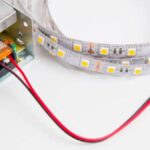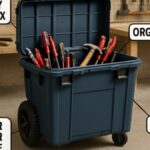Windows are more than simple architectural details—they are vital components that regulate your home’s climate, bolster curb appeal, ensure safety, and maintain your property’s value. Over the years, exposure to the elements can cause windows to deteriorate, losing their ability to insulate properly, shield your home, and function smoothly. Attending to these issues proactively prevents larger, costlier repairs and promotes a more secure, comfortable living environment. By contacting industry experts like windows and siding outlet, you’ll gain specialized advice and access to the most advanced replacement windows available today, ensuring your home remains at its best.
Many homeowners struggle with deciding when it’s time to upgrade their windows. Fortunately, there are telltale signs that indicate a need for replacement. By identifying these symptoms early, you can act before small problems escalate, ultimately reducing energy bills, improving comfort, and preserving your investment. Below, we break down six major signs that signal it’s time to consider window replacement.
Difficulty in Operation
If opening, closing, or locking your windows has become a chore, or if you notice sticking, jamming, or balance issues, these inconveniences may hint at much deeper structural problems. Warped frames, deteriorating sashes, or worn-out hardware often result from years of weather exposure, temperature swings, or even moisture intrusion. Persistent operational challenges diminish convenience and may pose hazards in emergencies if windows don’t serve as safe, reliable exits. Additionally, windows that are hard to operate are more likely to remain closed, impeding ventilation and fresh air flow throughout your home. In contrast, new windows with precision-engineered tracks and hardware restore effortless use, ensuring your family’s safety and ease of living while preventing frustration and potential security risks.
Drafts and Increased Energy Bills
Do you feel cool drafts or sudden temperature drops near your windows, even when they are firmly shut? This often means your windows are losing their ability to insulate effectively, letting outside air seep in while expensive heated or cooled air escapes. The U.S. Department of Energy highlights that old or inefficient windows can account for 25% to 30% of residential heating and cooling energy use due to air leaks and insufficient sealing. These leaks force your HVAC system to work overtime, driving up utility bills and accelerating wear on the equipment. When you invest in energy-efficient replacement windows with modern weatherstripping, insulated frames, and gas-filled glass panes, you’ll see noticeable improvements in indoor comfort and steady drops in heating and cooling expenses. Acting early helps your home stay comfortable all year long and protects the longevity of your HVAC system.
Condensation Between Glass Panes
Finding fog, persistent condensation, or moisture streaks inside the layers of double- or triple-pane windows is a hallmark of seal failure. Quality insulated glass units normally include a hermetic seal that traps inert gas between panes, boosting energy efficiency and preventing moisture entry. Over time, seals can break down, often due to prolonged sun exposure, thermal expansion and contraction, or even improper installation. Once seals have failed, your window won’t insulate as designed, leading to reduced energy efficiency, disappointing indoor comfort, and obstructing your view. In more severe cases, continued moisture infiltration may damage window frames or create a breeding ground for mold, leading to health concerns or costly repairs. Replacing compromised windows promptly restores the clarity and function you expect—plus, it helps guard against interior water damage and keeps your home healthier and brighter.
Visible Damage and Decay
Regular visual inspection is essential to spot damage before it causes further problems. Look for warning signs such as cracked, chipped, or shattered glass, rotted or warped window frames, peeling paint, or rusty metal hardware. Any of these issues means your windows are no longer fully protecting your home from the elements. Rotten or damaged frames, in particular, let water and humidity creep inside walls, leading to the growth of mold, further decay, and eventually weakening your home’s structure. In some cases, pests can exploit weakened areas to enter your house. Upgrading to windows with rot-resistant materials—such as vinyl, composite, or aluminum-clad wood—ensures better resilience against wet and extreme weather, lowering maintenance needs and preserving your home’s curb appeal over the decades.
How to Check for Window Decay
Not all damage is visible at first glance. To check for rot, gently probe the wood around your window sashes and frames with a screwdriver or small tool. If it sinks in easily, it’s a sign that prolonged moisture has softened the wood, suggesting extensive internal damage. Professional inspections from window specialists can provide a thorough assessment, ensuring you receive the best advice on repairs or replacements to keep your home safe, energy efficient, and looking its best.
Increased Noise Levels
Are you constantly disturbed by traffic, neighbors, or barking dogs, even when your windows are closed? Windows are one of your home’s first barriers to unwanted outside noise. Older, single-pane windows provide minimal sound insulation, and over time, even insulated windows may lose their effectiveness as seals wear out. If your indoor environment has become noticeably noisier, upgrading to high-performance double- or triple-pane windows with advanced sealing can dramatically reduce noise pollution. Enhanced soundproofing materials and construction isolate your living spaces, creating a more peaceful, relaxing environment. This benefit is especially valuable for homes in bustling neighborhoods or near busy streets, helping to transform your home into a welcoming retreat from the outside world.
Outdated Appearance
Style matters, inside and out. Windows are central to your home’s curb appeal and can easily make your entire house look dated if they are faded, mismatched, or don’t complement your property’s design. Over time, exterior finishes may peel, fade, or clash with updated siding and roofing. Selecting new windows provides an excellent opportunity to improve symmetry, showcase contemporary design trends, and boost your home’s value. With today’s diverse window styles, frame colors, grille patterns, and glass options, you can perfectly customize your replacement to match or enhance your architecture. And with improved technology, you’ll enjoy aesthetic appeal and lasting performance, ensuring your home always looks its best from every angle.
Conclusion
Recognizing when your windows need replacement is about more than simple looks—your windows affect everything from family safety and comfort, to energy bills, to the long-term value and health of your home. Issues like poor operation, frequent drafts, increased condensation, visible damage, intrusive noise, and a tired appearance are all calls to action. Waiting lets small issues balloon into major expenses. Instead, turn to trusted window specialists for expert diagnostics, thorough product comparisons, and premium installation services that can help your home become more resilient, beautiful, and valuable for years to come.






